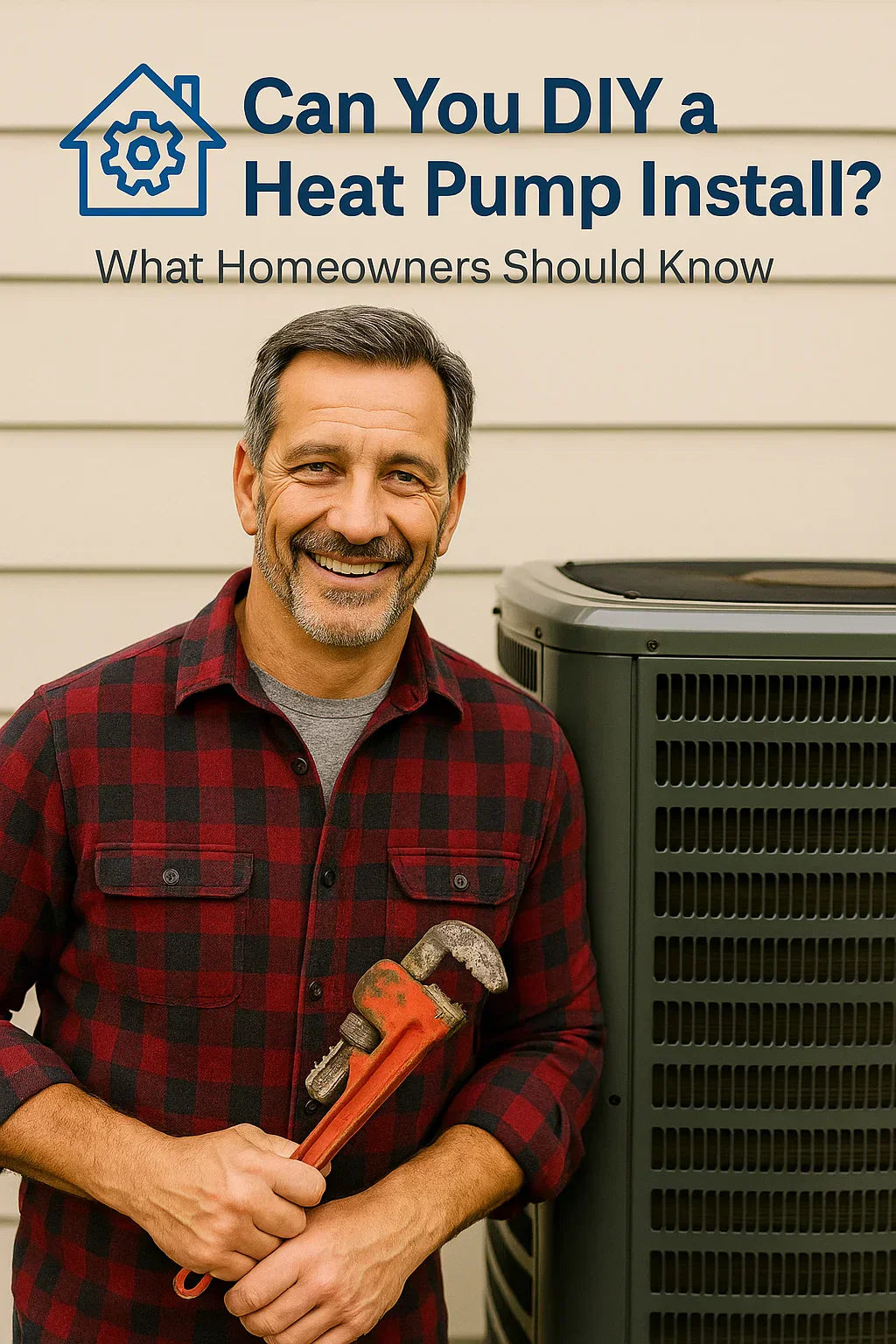Upgrading to a Goodman 2 Ton 15.2 SEER2 Heat Pump offers efficiency and comfort, but many homeowners like Mike wonder:
“Can I install it myself to save money?”
While DIY projects can reduce costs, heat pump installations involve complex, regulated, and risky tasks. Here’s what you need to know before attempting a DIY install.
🧰 Why Homeowners Consider DIY Installation
-
Save on installation labor costs ($1,500–$3,500).
-
Control over project timing and details.
-
Sense of accomplishment.
Mike, a practical homeowner, initially considered DIY to lower upfront costs before learning about the hidden risks.
🔍 What’s Involved in a Heat Pump Installation?
Installing a heat pump requires: ✅ Removing the old system safely. ✅ Setting and leveling the outdoor condenser unit. ✅ Installing the indoor air handler/coil. ✅ Connecting refrigerant lines and pulling a deep vacuum. ✅ Running and connecting electrical circuits (often 220V). ✅ Setting up a drain line and float switch. ✅ Charging refrigerant to manufacturer specifications. ✅ Testing system operation for correct airflow and refrigerant pressures.
⚖️ Legal Considerations and Licensing Requirements
EPA 608 Certification:
Handling refrigerants requires EPA Section 608 certification. DIY homeowners without this certification cannot legally handle refrigerants.
Permits and Inspections:
-
Electrical work may require permits and inspection.
-
Local codes may require a licensed HVAC contractor for installation.
-
Non-permitted installs can lead to fines and insurance issues.
Learn more at the EPA Section 608 Certification page.
🛡️ Warranty and Manufacturer Policy Implications
Goodman’s warranty requires professional installation to remain valid. DIY installation may:
-
Void parts and compressor warranties.
-
Leave you responsible for repairs or early replacement costs.
-
Disqualify you from rebates that require licensed installation.
Confirm your warranty terms at the time of purchase or via Goodman’s registration page.
🛠️ Tools and Skills Required for DIY Installation
Installing a heat pump is not like replacing a thermostat or air filter. You will need: ✅ HVAC gauges and a vacuum pump for line evacuation. ✅ Refrigerant scales for precise charging. ✅ Electrical skills for wiring high-voltage circuits. ✅ Brazing/flare fitting skills for leak-proof refrigerant line connections. ✅ Knowledge of refrigerant charge, airflow balancing, and system testing.
Without these tools and skills, you risk damaging the system or creating safety hazards.
⚠️ Risks of DIY Installation
-
Refrigerant Leaks: Poor brazing or flare connections lead to leaks, damaging the compressor.
-
Electrical Hazards: Incorrect wiring can cause shorts, fires, or electrocution.
-
Improper Charging: Under- or overcharging refrigerant reduces efficiency and lifespan.
-
Warranty Voidance: Manufacturer warranties require licensed installation.
-
Code Violations: Non-compliance can lead to fines and insurance claim denial.
🧑🔧 When It Makes Sense to Hire a Professional
Consider a pro for:
✅ Refrigerant handling and system charging. ✅ Electrical wiring to code. ✅ System sizing confirmation for efficiency. ✅ Manufacturer warranty compliance. ✅ Rebate eligibility for your system.
A professional ensures your Goodman 2 Ton heat pump is installed safely, efficiently, and to code.
💸 Cost Considerations: DIY vs. Professional
While DIY may save $1,500–$3,500 upfront:
-
Incorrect installation can lead to $500–$2,000+ in repairs.
-
Energy efficiency losses can increase utility bills.
-
Replacing a damaged compressor without warranty can cost $1,200–$2,500.
Professionally installed systems often pay for themselves in energy savings, warranty coverage, and rebates.
🧑🏭 Mike’s Story: Deciding Against DIY
Mike considered DIY to save $2,000 but discovered: ✅ Risk of voiding the Goodman warranty. ✅ Ineligibility for a $1,500 rebate requiring licensed installation. ✅ High risks with refrigerant and electrical work.
Mike chose professional installation, ensuring: ✅ Warranty protection. ✅ Access to rebates and tax credits. ✅ Peace of mind with safe, efficient operation.
🔗 Resources for Homeowners
✅ Final Thoughts: DIY vs. Professional — What’s Best for You?
While a DIY heat pump install may sound appealing to save money, the risks, legal restrictions, and warranty limitations often outweigh the benefits.
✅ A professional installation ensures your Goodman 2 Ton system operates at peak efficiency, maintains its warranty, and qualifies for rebates and incentives.
Ready to upgrade confidently? Explore your Goodman 2 Ton 15.2 SEER2 Heat Pump and plan your installation with peace of mind for long-term comfort and savings.
In the next topic we will know more about: Is a 2-Ton Heat Pump Enough for Your Home? Sizing Tips for Homeowners







